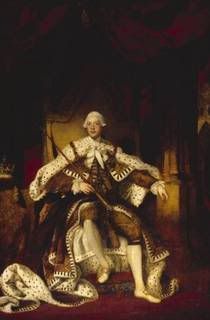
For centuries, leather and scent have gone hand in hand; and for centuries, that hand was sheathed in the finest of gloves… Like his predecessors on Western thrones from Catarina di Medici onwards, King George III (1738-1820) – the English monarch whose reign was interrupted by his descent into madness - shielded his regal nose from stench with a wave of a fragrant glove.
But things had changed in the realm of perfumery, and the strong animalic aromas favoured by his forebears had fallen out of favour half a century before he was born. Many still believed that the putrid miasmas emanating from cadavers, cesspools and the very earth were responsible for plagues, and that bathing, by ridding the skin of its protective coat of grime and immersing the body in hot water would expose one to maladies by opening up the pores. However, a change in sensibilities was drawing the aristocracy and the rising bourgeois classes towards lighter floral scents conjuring images of nature. Perfumes were no longer though of only as invisible shields: their poetic essence spoke to the very soul. Animalics were reviled and thought harmful: musc, for instance, was associated to the smell of excrement.
It is thus quite surprising to find that the first documented leather scent, now known as Royal English Leather was composed in 1780 for King George III by James Henry Creed at the height of the fashion for delicately scented colognes and powders.
Was the King’s master perfumer inspired by the flower-treated leathers still in vogue at the time? If so, he may have been the first to think of introducing a note not found in nature into the vocabulary of perfumery, a full century before the invention of synthetic aromatic compounds. Creed also seems to have been the inventor of an association which would persist up to the present day, the citrus-leather blend. “Seems to have been”, because the scent was apparently reformulated in 1805, at a time when stronger, animalic perfumes were enjoying a revival: at the outset, it may simply have been a floral hesperidic blend used to treat the King’s gloves…
Royal English Leather has none of the astringent bitterness we have come to associate with later, birch-tar based scents. Indeed, the leather note might have originally been created with styrax and castoreum, although conclusive info is not divulged.
Royal English Leather opens with a solar-sweet trumpet blast of the juiciest mandarin studded with cloves, peeled open in a study lined with leather-bound books. The mouth-watering citrus yields to a slightly soapy jasmine that can nearly be tasted, as though sipping jasmine tea – the tannic oakmoss produces the tea-like effect. In the dry-down, the scent subsides into a skin-like, salty leather drizzled with violet powder fallen from the royal wig… The merest touch of aristocratic stench pervades Mad King George’s bespoke fragrance: like its brasher descendants, from Eau d’Hermès to Miller Harris Cuir d’Oranger, Royal English Leather displays a virile disdain for the niceties of the floral-loving bourgeoisie. Leather scents, from then on, would firmly claim their elitist stance.
Portrait of King George III by Sir Joshua Reynolds, 1780 courtesy of royalacademy.org.uk
.jpg)



.jpg)